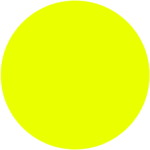From Templates to Toolkits: Building Smarter Brand Infrastructure
Templates scale output. Toolkits scale thinking.
Most brands start with templates.
Easy to use. Easy to train.
But as the brand evolves — those templates start breaking, cluttering, and slowing everything down.
A template says: “Here’s the exact way to do it.”
A toolkit says: “Here’s how to think when you do it.”
Templates Gave Us Control. Then They Became a Trap.
Templates were born from a good place:
- Protecting visual consistency
- Reducing creative overload
- Speeding up production
But they assume a static context.
When platforms change, teams grow, or messages shift —
templates don’t bend. They snap.
Why Fixed Templates Break Under Growth
Here’s what we often see with scale:
- Multiple versions of “template v5 final FINAL really this one”
- Frustrated teams asking for “just one tweak”
- Copy/paste edits that break brand voice
- Design debt from unused or outdated formats
Templates multiply.
Toolkits unify.
What Makes a Toolkit Different?
A toolkit is not a set of files.
It’s a logic layer.
It includes:
- Use-case based modules
- Guidelines with if/then logic
- Variation paths by persona or channel
- Reusable decision trees
- Principles, not rules
Toolkits enable autonomy without chaos.
How We Built a Toolkit-Based System for a Growing Brand
We worked with a fast-scaling tech brand that was drowning in PDF decks, Canva templates, and disconnected assets.
We rebuilt their infrastructure:
- Started with a content pattern audit
- Extracted their real brand behaviors across channels
- Repackaged them into smart components (format + logic)
- Documented how to think — not just how to look
- Integrated everything into a modular library with training flows
Outcome?
Teams stopped requesting templates —
and started building with intent.
Toolkit Thinking: Rules, Flexibility, and Logic
Toolkit-based design teaches teams:
- What’s fixed and what’s flexible
- When to break rules, and how to do it without damaging integrity
- How to adapt without diluting identity
It’s systemic empowerment.
Not constraint — creative clarity.
Final Thought: Don’t Just Reuse. Reimagine.
Templates teach repetition.
Toolkits enable evolution.
If your design process feels like repetition fatigue —
you don’t need more templates.
You need smarter tools.
PAGE TOPICS
Brand toolkit
- templates vs toolkits
- how to build a brand toolkit
- adaptive brand infrastructure
Templates break at scale. Learn how toolkits give brands the logic, flexibility, and structure to adapt and grow without losing control.
